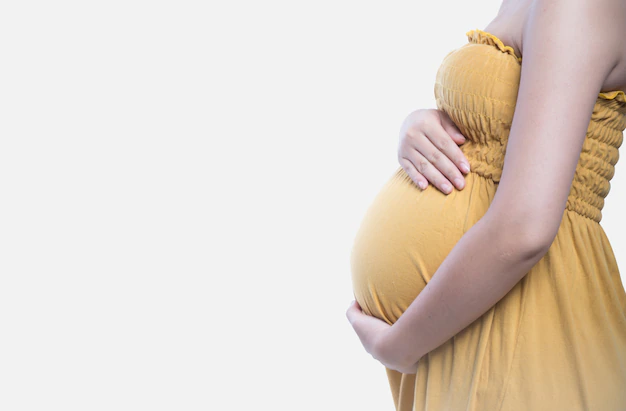A baby’s head is said to be ‘dropped’ or engaged when it descends lower into your pelvis.
In medical terms, engagement of the head occurs when the largest diameter of the head, crosses the pelvic brim. It is a welcome sign, as labor can occur anytime soon.
How to know if the head is engaged?
Did you notice that your baby bump looks smaller than the previous day? Fret not, as this indicates that your baby might have just entered the lower pelvis.
The first sign of baby head engagement is a drop in the pregnancy belly. You may notice that your belly seems to have shifted downwards in the final weeks. This is mostly due to the head being engaged.
Another sign that most mothers will like is improved breathing. Your baby no longer impinges on your diaphragm, letting you breathe better.
It gets more difficult to walk for longer hours. Your waddling gait has also gotten less graceful than before.
As the baby descends lower into the pelvis, it presses on the bladder and rectum. This leads to frequent toilet trips and constipation.
You may notice an increased dull pain sensation in the lower back and pelvic region.
When does Head Engagement occur?

Every pregnancy is different in its own way.
There is no rule of thumb as to when the baby’s head should get engaged.
Mostly for first timers, the baby’s head engages in the last weeks of the third trimester. Ideally by 36- 37 weeks, but it can occur as early as 34 weeks as well. However, in subsequent babies, the head engages later in the third trimester and can occur even during labor.
Also note that both scenarios are perfectly normal. If the baby’s head is not engaged, it could also mean that it is a non-preferred position for delivery, like breech or occipito- posterior (back of the baby facing the mother’s spine).
Classes of engagement
Have you wondered what your Obgyn checks every time you enter their office in the last trimester? They check how much the baby’s head has descended into the pelvis based on how many fifths the baby’s head has dropped.
- 5/ 5: Head is within the abdomen, hence, not engaged
- 4/ 5 OR 3/ 5: The head is descending into the pelvis, but not engaged yet
- 2/ 5 OR less: Head is engaged
Tips for getting the baby’s head engaged sooner

Practice prenatal yoga
The baby’s head gets engaged in the last trimester of pregnancy. This depends on a lot of anatomical and environmental factors, including the baby’s size and amniotic fluid. However, here are some tips that help with the descent of the head.
- Staying physically active by walking regularly. A brisk walk of 40- 60 minutes is proven to be beneficial
- Practicing prenatal yoga – malasana, duck walk (under expert guidance)
- Exercises that help align the pelvis – cat and camel exercises (especially, for breech babies)
- Squats, but under your Ob-gyn’s consultation
How long will it take for labor to set in after engagement occurs?

Labor is fast approaching!
Babies have a mind of their own! So, it cannot be predicted with certainty when the engagement occurs and when labor starts. However, engagement only means that D- day is arriving.
Some women develop contractions and go into labor even before the head is fully engaged. The powerful contractions help the baby’s head to get engaged and also get delivered. However, if you notice other signs of labor, do consult your Obgyn immediately.
Conclusion
A baby’s head is said to be engaged when it drops lower down into the pelvis. This occurs in the last leg of 3rd trimester in most women, while in some it can occur even after the labor sets in. Once engagement occurs, the baby bump seems to descend lower and the out-of-breath feeling decreases.
Regular walks and prenatal yoga with pelvic stabilizing exercises help with the baby’s descent. Though it is neither a sign of labor nor a sign of impending labor, it is prudent to seek an Obgyn/ midwife’s consultation in the last trimester. This helps to know the status of the baby’s position and the degree of head descent.
